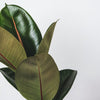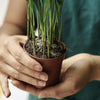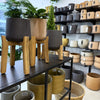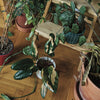Dieffenbachia poisonous beauty

Dieffenbachia is a popular plant among gardeners and houseplant lovers due to its large and beautifully patterned leaves. This tropical plant comes from Central and South America. Dieffenbachia is a perennial plant with thick, upright stems that can grow up to 3 meters tall. Its leaves are broad, heart-shaped or lance-shaped and are usually covered with beautiful patterns in various shades of green, white and yellow. The patterns can vary from variety to variety, but often form contrasting stripes or spots that give the plant a unique and decorative look.
(Non)poisonous plant
As the title of the article suggests, Dieffenbachia is a poisonous plant. It contains substances called calcium oxalates, which are found in its leaves and stems. These oxalates can be dangerous, especially for pets and small children, if ingested . Ingestion or excessive contact with Dieffenbachia plant juices may cause unpleasant symptoms such as irritation of the oral cavity and throat, burning in the mouth, swelling of the tongue and throat, nausea, vomiting and diarrhea. In some cases, swelling of the airways can occur, which can lead to difficulty breathing. If symptoms of Dieffenbachia poisoning occur, it is important to seek medical attention.
Dieffenbachia is classified as a houseplant that is more poisonous than others, but with proper handling and precautions, Dieffenbachia is usually a safe plant and can serve as an attractive interior decoration with pleasant green foliage.

Photo: Dieffenbachia Reflector interesting with its colorful non-traditional coloring
For lovers of large leaves
All species of Dieffenbachia are powerful tropical plants with large leaves and compete well even with such queens as monsters orphilodendrons . This plant also belongs to the group of aroids " Araceae" and caring for them is relatively easy if you follow a few correct principles.
How to take care of your "difka"?
Dieffenbachia is a plant that prefers a warm but moist environment. When growing Dieffenbachia, it is important to ensure optimal air conditions and temperature so that the plant feels good and grows healthily. Narrow, discolored leaves, or even worse, huge dry spots or falling yellow leaves, are a frequent ailment in bad conditions for this plant.

Photo: Dieffenbachia Compacta
What kind of environment suits them
Dieffenbachia prefers a temperature of around 20-24 °C during the day. It is important to avoid exposing the plant to cold drafts or excessively cold temperatures that could damage its growth. Lower temperatures could damage the leaves and reduce the vitality of the plant. At night, the temperature should be slightly lower, ideally around 16-18 °C.
At the same time, you need to think about higher air humidity. If the air is too dry, it can lead to browning and drying of the edges of the leaves. It is advisable to increase the air humidity around the plant by regularly spraying the leaves with clean water or placing the plant on a tray with water. Another option is to use an air humidifier.
Light conditions
Dieffenbachia prefers bright but indirect light. Direct sunlight could burn the leaves, so it's important to place the plant where it gets plenty of light but is not in direct sunlight. A suitable location is near a window facing east or west. With a lack of light, the plant can suffer and the leaves can be lost.
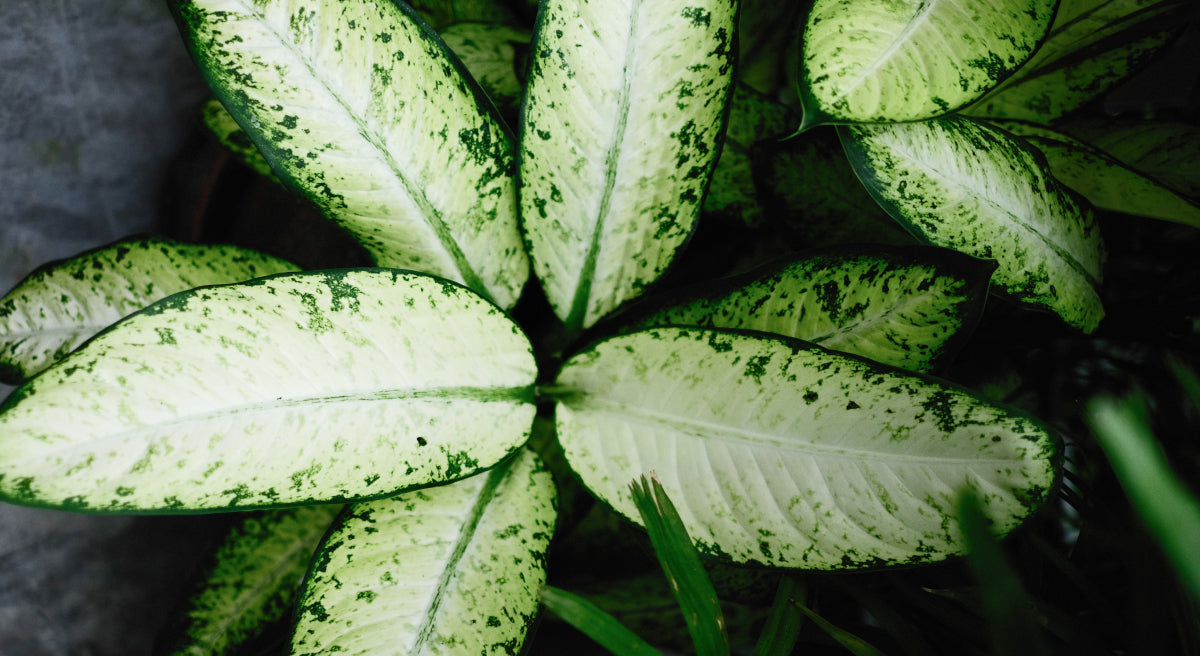
What is the suitable substrate for Dieffenbachia?
Dieffenbachia requires soil with good permeability that allows excess water to drain away. At the same time, the soil should be able to maintain moderate moisture for the plant. Here are some important soil factors for Dieffenbachia:
-
Permeability: The soil should be well permeable and must not become too wet. The plant does not tolerate waterlogging of the roots, which could lead to rot. When choosing soil, it is advisable to choose a mixture with good drainage, which prevents water retention in the roots. You can use, for example, perlite for aeration or use already mixed substrate for aroids .
-
Structure : The soil should have a loose structure that allows for root growth and air movement. Adding organic material such as compost or peat moss can help improve soil structure and increase its ability to hold moisture.
-
Acidity: Dieffenbachia prefers slightly acidic to neutral soil with a pH around 6-7. It is important to choose a soil with an appropriate pH or to adjust the pH of the soil using suitable fertilizers or additives.
-
Nutrients: A plant needs sufficient nutrients for healthy growth. It is advisable to use a balanced fertilizer rich in nitrogen, phosphorus and potassium, which support the correct development and greening of the leaves.
It is also important to regularly check the soil moisture and water the Dieffenbachia as needed. Soil that is too dry can cause the plant to wilt, while soil that is too wet can cause root rot.
Correctly observing these conditions for temperature, humidity and light will help Dieffenbachia to grow healthily and keep its beautiful leaves in good condition. It is important to monitor the plant regularly and adjust the care according to its needs.

Photo: Dieffenbachia Camilla
Dieffenbachia is a popular plant because of its attractive foliage and ease of cultivation. There are several popular species and varieties of Dieffenbachia that are often available in stores. Here are a few of them:
-
Dieffenbachia seguine: This species has large leaves with a characteristic pattern of white stripes and spots on a dark green background. It is one of the most widespread species of Dieffenbachia.
-
Dieffenbachia maculata: This species has leaves with distinct spots and patterns in shades of green and white. Leaves can have a variety of shapes, including heart-shaped and lanceolate.
-
Dieffenbachia amoena: This species is known for its large, lanceolate leaves with a bright green base and white spots and stripes. It is one of the favorite species among houseplant collectors.
-
Dieffenbachia picta: This variety has broad leaves with various patterns and stripes in shades of green, white and cream. It is a very attractive plant suitable for interiors.
-
Dieffenbachia compacta: This variety is smaller in stature than some of the other species. It has compact and dense growth with beautiful leaves in patterns and colors similar to other species.
- Diffenbachia Camilla: Also a smaller variety with whitish-yellow leaves and green edges.
Each of these varieties has its own unique appearance and leaf patterns that add decorative value to the space. The choice depends on the personal taste and preferences of the grower.
You can also find other Dieffenbachia varieties in our offer here .
Author: Martin Seidl
-
Posted in
Péče o pokojovky
